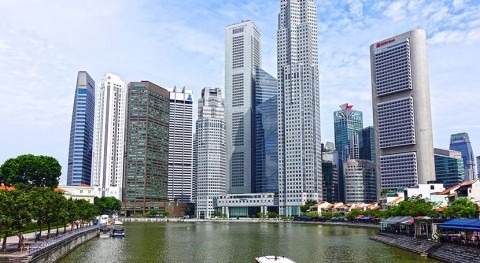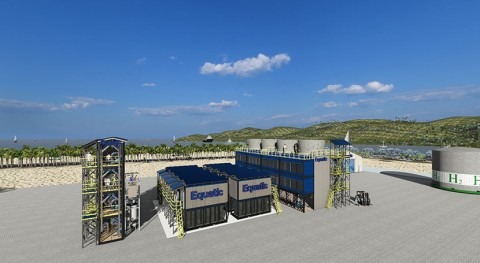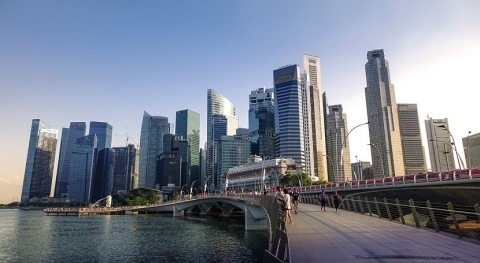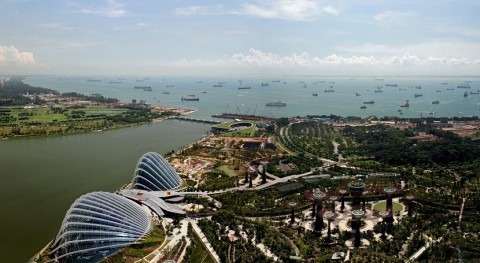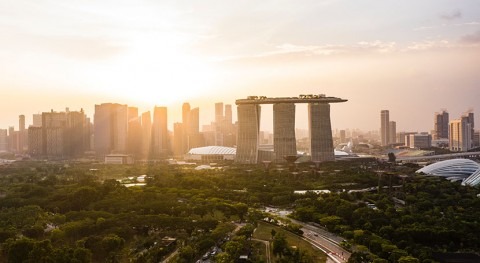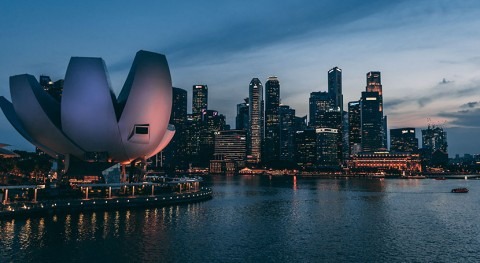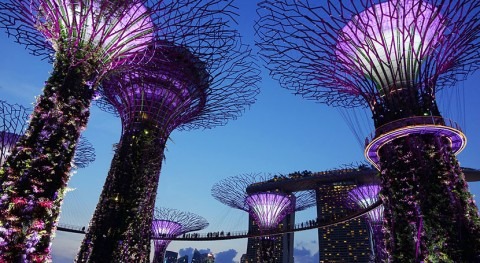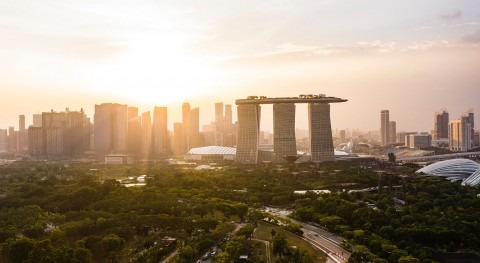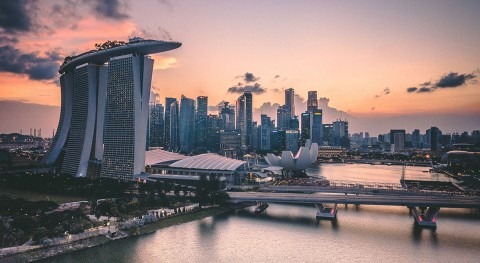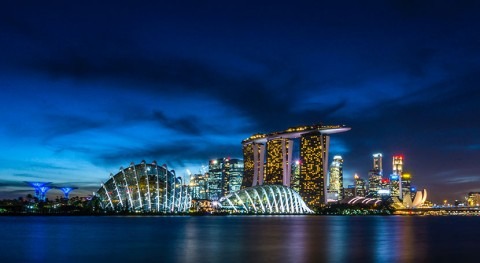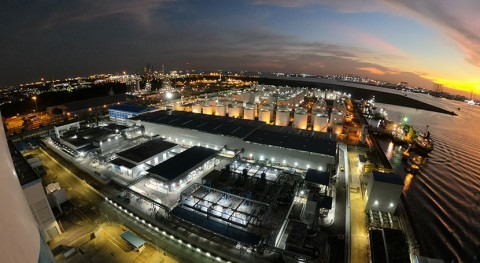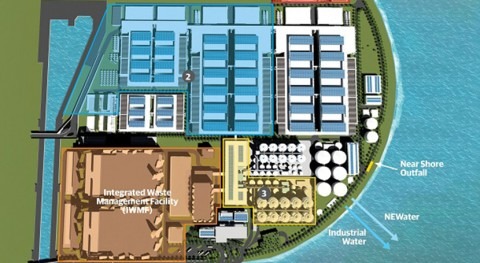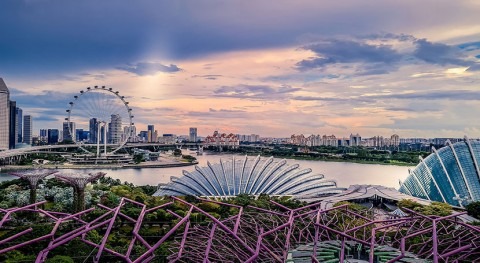The National Environment Agency (NEA) and PUB, Singapore’s National Water Agency, have announced that the first phase of construction of Tuas Nexus has begun, and it is set to be completed in phases from 2025 onwards. The co-location of two mega facilities – the Tuas WRP and IWMF – will help forge a more sustainable Singapore by optimising land use and maximising energy and resource recovery.
The world’s first integrated waste and water treatment facility to be conceptualised and planned from the ground-up, Tuas Nexus will be energy self-sufficient by harnessing synergies from Tuas WRP and IWMF. This is expected to result in carbon savings of more than 200,000 tonnes of CO2 annually, equivalent to taking 42,500 cars off Singapore’s roads. In addition, integrating both facilities will result in land savings of up to 2.6 hectares – about the size of four football fields, as compared to building the two as standalone facilities.
Tuas WRP – PUB’s answer to closing the water loop more effectively
Tuas WRP, a key component of PUB’s Deep Tunnel Sewerage System (DTSS) Phase 2 project, will have an initial treatment capacity of 800,000m3 per day – the equivalent of 320 Olympic-sized swimming pools of water. Unlike conventional water treatment plants, it is equipped to receive both domestic and industrial used water streams from two separate deep tunnels for treatment. In a first for Singapore, Tuas WRP (refer to Annex B for more info) will also be capable of treating industrial used water to a sufficiently high standard for industries’ use.
Tuas Nexus will be energy self-sufficient by harnessing synergies from Tuas WRP and IWMF
Besides incorporating advanced physical, biological and chemical treatment processes, Tuas WRP will also house the largest membrane bioreactor facility in the world – this will enable the plant to be more energy efficient while occupying less space compared to existing water treatment plants and avoid the need for a long sea outfall. A NEWater factory to be built on the rooftop of Tuas WRP will significantly boost PUB’s NEWater production capability, further ensuring a robust and resilient supply of water for Singapore that can meet growing water demand and cope with the impact of climate change.
Said Mr Ng Joo Hee, Chief Executive, PUB, “By itself, PUB’s Tuas WRP would already be breaking new ground, including housing the world’s largest membrane bioreactor. But when coupled with the NEA’s IWMF to form the Tuas Nexus, it would be so much more. We are building Tuas Nexus because it is the smart thing to do, as the sum would be far greater than its two parts. I believe the Tuas Nexus advances the state-of-the-art in sustainable urban waste management and resource recovery, and establishes a new international benchmark for the field.”
IWMF - NEA’s response plan to meeting Singapore’s solid waste management needs
IWMF is an integral part of NEA’s long-term plan to meet Singapore’s solid waste management needs. It will be equipped with state-of-the-art solid waste treatment technologies to improve energy and resource recovery from waste. It is Singapore’s first integrated facility to treat incinerable waste, source-segregated food waste and dewatered sludge from Tuas WRP, as well as to sort household recyclables collected under the National Recycling Programme (NRP).
Besides being Singapore’s largest waste incineration plant when fully completed, IWMF will also be the most energy efficient yet, and for the first time, integrate an operational food waste treatment facility and sludge incineration facility to achieve higher food waste recycling rate and greater synergy with WRP’s operations. In addition, the IWMF’s automated Materials Recovery Facility will consolidate all recyclables collected under the NRP to achieve greater economies of scale, higher sorting efficiencies and recovery yields for various recyclable waste streams, such as metals, paper, and plastic. This will help boost Singapore’s overall recycling efforts and bring Singapore another step closer to realising its vision towards zero waste. These efforts are part of Singapore’s Zero Waste Masterplan, where targets have been set to strengthen Singapore’s climate, resource and economic resilience with an emphasis on a circular economy approach.
The excess electricity exported to the grid will be able to continually power up to 300,000 four-room HDB apartments
Mr Tan Meng Dui, Chief Executive Officer of NEA said, “Tuas Nexus is the world’s first greenfield project to harness the co-location synergies of two mega waste facilities for waste and water treatment. Besides being part of an integrated Tuas Nexus facility, the IWMF, on its own, will also be the largest, most advanced, efficient and integrated yet of our solid waste treatment facilities. The integrated facility shines the way for a more circular approach to resource management and, brings us one step closer to realising the vision of a Zero Waste Nation.”
Tuas Nexus Synergies
By employing the latest technologies, Tuas Nexus will harness the synergies of the water-energy-waste nexus from used water and solid waste. The by-product of one facility becomes a resource for the other facility. For example, IWMF’s Food Waste Treatment Facility will convert source segregated food waste into food waste slurry that is suitable for co-digestion with used water sludge at the Tuas WRP. The co-digestion of food waste and used water sludge will increase biogas production by 40 per cent at the Tuas WRP, compared to biogas yield from treatment of used water sludge alone. The biogas produced will then be combusted at the IWMF and the combustion heat energy recovered to improve the overall plant thermal efficiency and boost electricity generation. The electricity generated by IWMF will be used to sustain the operations of Tuas Nexus with excess to be exported to the grid. The excess electricity exported to the grid will be able to continually power up to 300,000 four-room HDB apartments.




